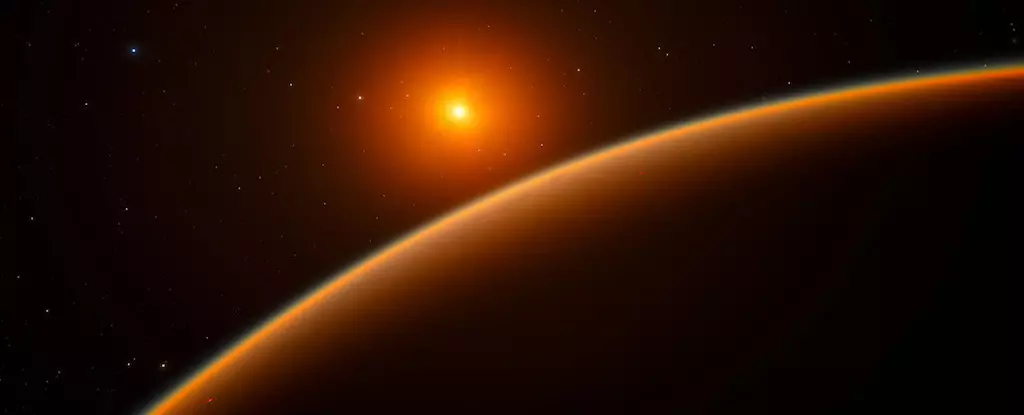Recent astronomical findings suggest that Earth-like exoplanets, particularly super-Earths, may be far more prevalent throughout the Milky Way than previously understood. In a significant breakthrough, researchers, led by astrophysicist Weicheng Zang from the Harvard-Smithsonian Center for Astrophysics, have uncovered an extraordinary super-Earth situated at an orbital distance akin to that of Jupiter. This revelation challenges long-held beliefs that such planets primarily circulate close to their host stars.
Super-Earths are defined as exoplanets that exceed Earth’s mass but remain smaller than Neptune, and their discovery in regions traditionally dominated by gas giants significantly alters the landscape of our understanding of planetary formation. Zang identified the presence of this exoplanet through gravitational microlensing, a technique that exploits the warping of space caused by massive celestial objects to gauge the existence and characteristics of distant planets.
Gravitational Microlensing: A Window into the Cosmos
Gravitational microlensing serves as a powerful tool in exoplanet research. The methodology hinges on the alignment of a massive object, which acts as a lens, between Earth and a distant star. This cosmic ballet results in the bending of light, producing temporary spikes in brightness that signal the presence of unseen companions. In the case of OGLE-2016-BLG-0007, the team not only identified a super-Earth but also performed a broad analysis in conjunction with data from the Korea Microlensing Telescope Network (KMTNet), whose extensive reach includes observation stations in Australia, Chile, and South Africa.
The incorporation of this larger dataset allows for a deeper dive into the demographics of planetary systems in our galaxy. This study represents a monumental leap forward, featuring three times more exoplanets compared to previous microlensing research. While traditional detection methods have often highlighted planets in tight orbits, this groundbreaking work elucidates a vibrant population of super-Earths participating in orbits reminiscent of those in our solar system.
Flipping the Script on Planetary Orbits
Interestingly, the findings suggest that super-Earths are not confined to close-in orbits but are capable of thriving in the expansive regions beyond the inner solar system. Co-author Andrew Gould of Ohio State University noted that while smaller planets have generally outnumbered their larger counterparts, the study identifies nuanced patterns in the distribution of exoplanet sizes that were previously obscured.
Aligned with traditional wisdom, the understanding that a smaller percentage of planets would inhabit the periphery of planetary systems is now under scrutiny. Instead, this research underlines an abundance of super-Earths in wider orbits, arguing that our solar system may not be representative of the broader cosmic picture. This possibility hints at a complex tapestry of planetary systems, with variety playing an essential role.
The Implications for Planetary Habitats
Though the term “super-Earth” commonly refers to a planet’s mass and not its surface conditions or potential for habitability, the implications of these findings could be profound. By refining our understanding of how planets form and distribute in the galaxy, this research opens pathways to explore the potential for life beyond Earth. However, the quest for knowledge continues; insights into surface conditions and the chemical make-up of such planets remain elusive, and further investigations will be necessary.
Co-author Jennifer Yee emphasizes that the evidence of planetary diversity reveals a substantial population of super-Earths existing in orbits outside that of Earth, an observation that demands a re-evaluation of our assumptions regarding solar system architectures across the galaxy. The dynamic interplay of these planetary systems could elucidate how different types of exoplanets emerge and evolve.
Challenges Ahead in Exoplanet Discovery
Despite the promising revelations, the path forward is fraught with challenges. The complexity inherent in detecting microlensing events, particularly those associated with planets, cannot be understated. Co-author Richard Pogge highlights the arduous nature of this work, suggesting that the difficulty of identifying a star undergoing microlensing is magnified when searching for a planet. This underscores the necessity for continued advancements in both detection methodologies and observational technologies.
As we unravel the mysteries of our universe, the implications of these findings extend far beyond merely cataloging been exoplanets. They draw us closer to understanding the conditions that might foster life elsewhere in our galaxy. With one in three stars potentially hosting a super-Earth in a Jupiter-like orbit, the cosmos may be rich with habitable worlds waiting to be discovered. The future of exoplanet research is bright, and only time will reveal the treasures that lie hidden among the stars.


Leave a Reply